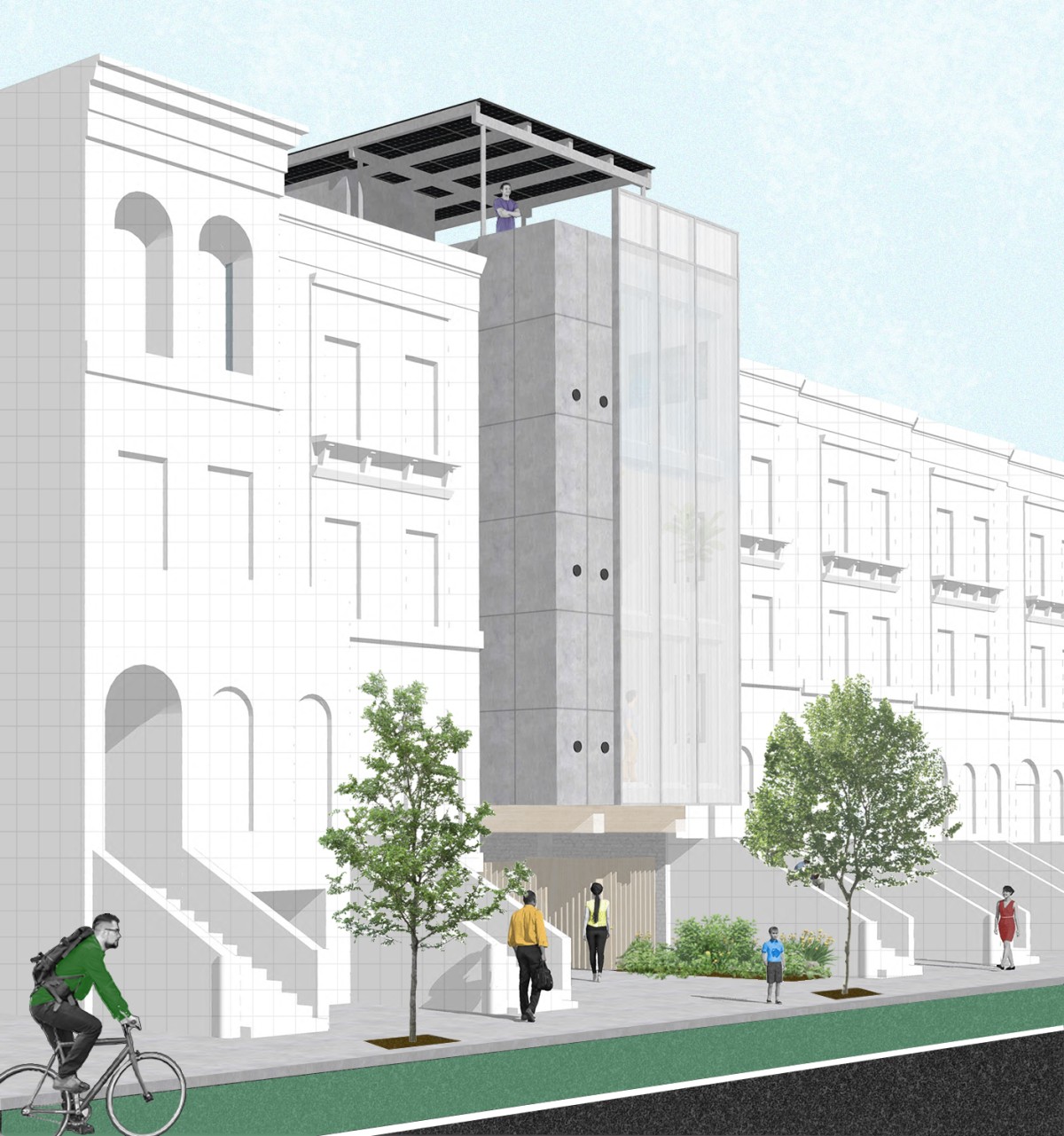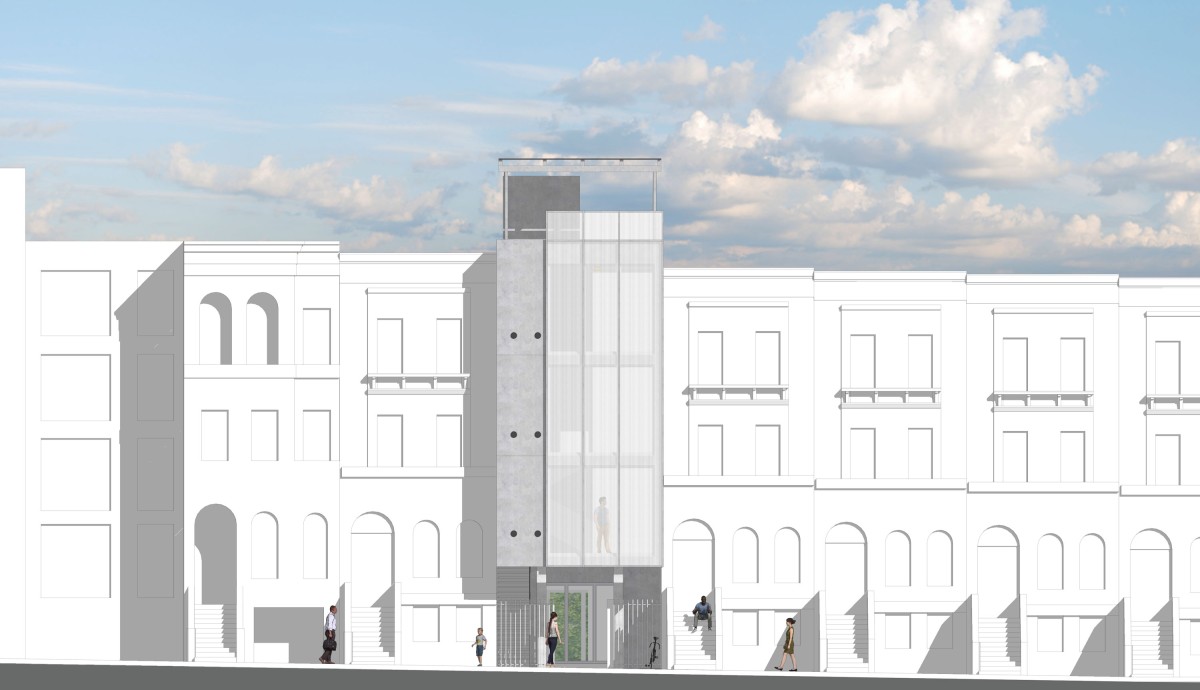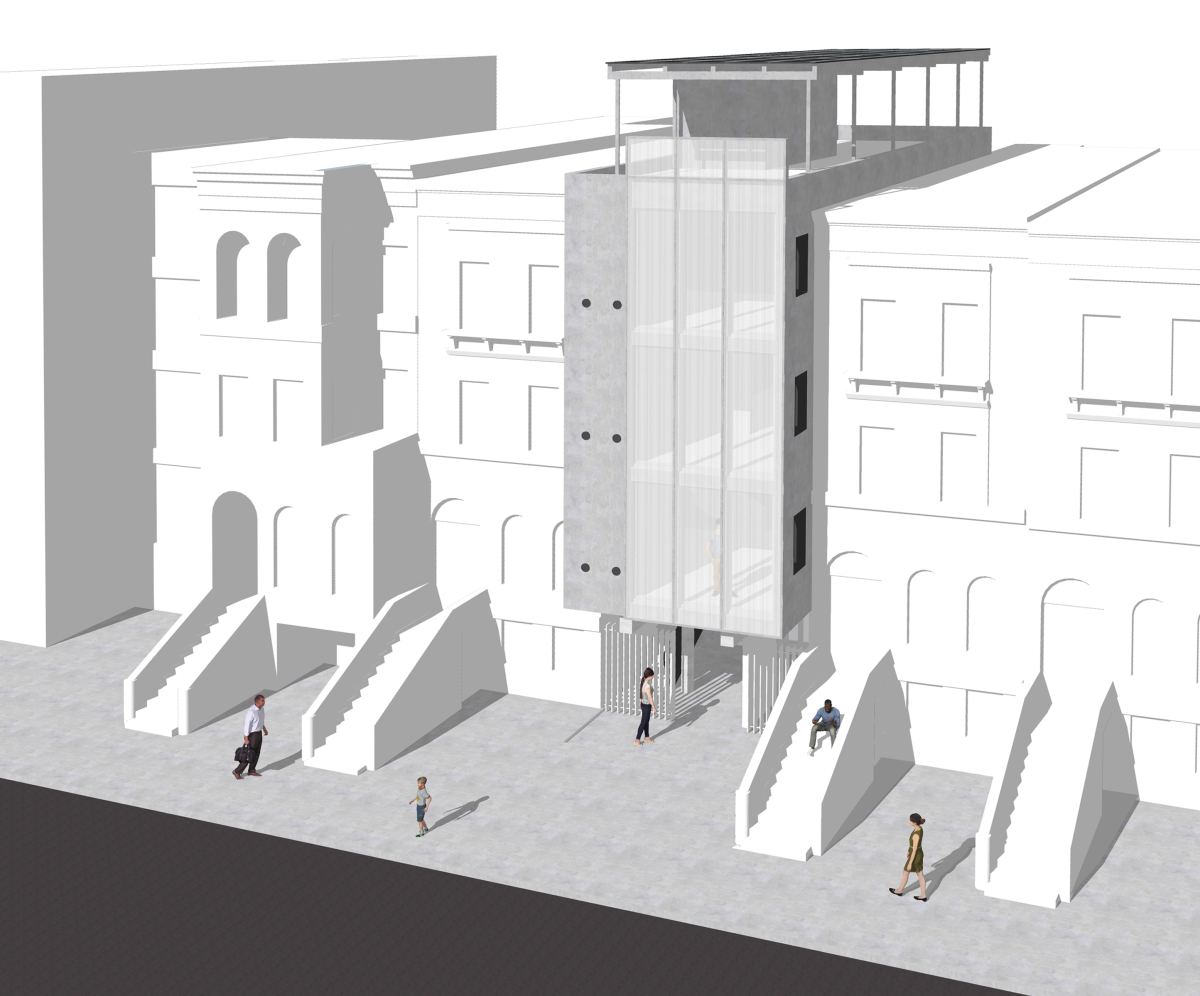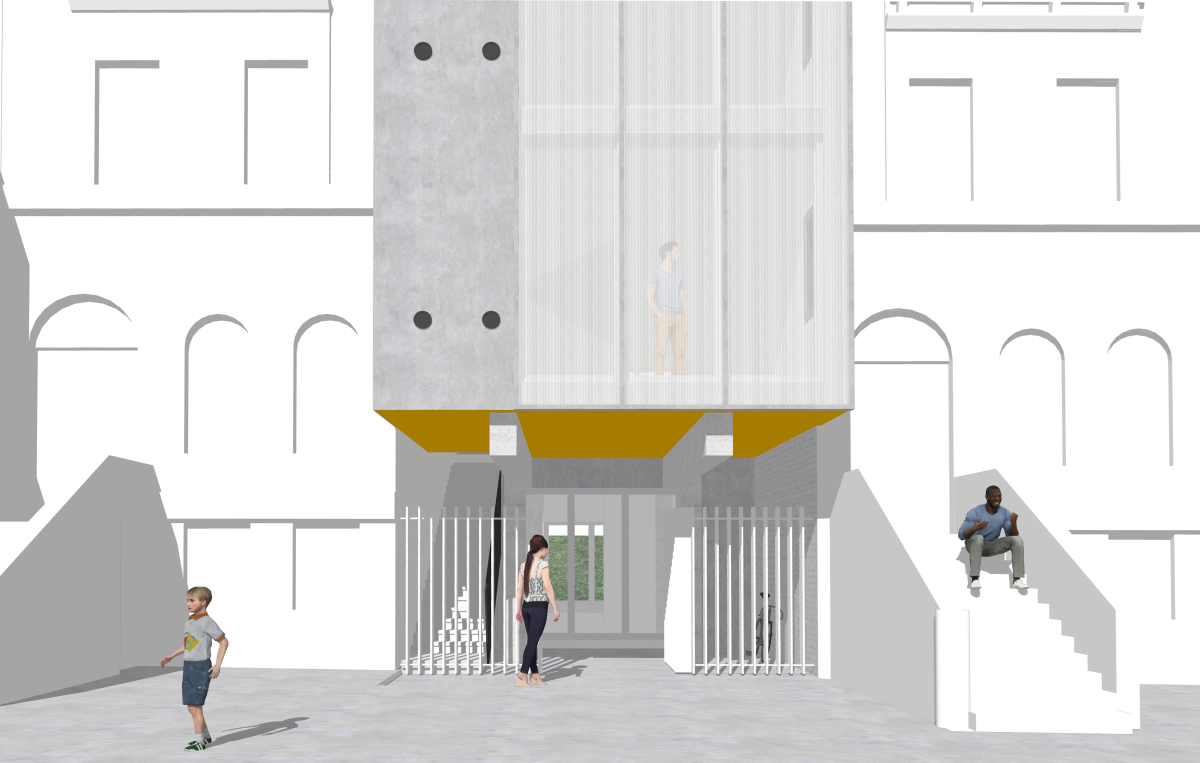







NET ZERO HOUSING NYC makes an extremely efficient, comfortable, quiet, low-energy structure, inexpensive to operate and to maintain, and NET-ZERO annually in its energy use; the entire energy load is offset by PV panels on the roof. The building is all-electric, burning no hydro-carbons and releasing no CO2 into the atmosphere. All new construction in New York City must achieve Net-Zero energy use if possible, in alignment with the Mayor’s goal of reducing CO2 emissions 80% by 2050. NET ZERO is possible due to the insulation quality and air-tightness of the building envelope, facilitated by using Cross-Laminated Timber (CLT) with its integral air barrier and inherent lack of thermal-bridging. Additionally R-8.5 triple pane windows, and a roof-mounted energy recovery ventilator (ERV) reduce the heating and cooling loads. The ERV brings constant fresh air into each unit and exhausts air without losing heating or cooling energy (currently ERVs are up to 93% efficient).
The building will have a much lower carbon footprint than conventional NYC construction by using CLT made from renewable wood sources, mineral wool insulation, a non-petroleum product and minimal concrete. Concrete production emits one ton of CO2 for every ton of concrete. We have not used concrete foundations, footings and basement walls, which are needed neither structurally nor programmatically. The pre-fabricated CLT and concrete structural elements are an efficient use of material with a low waste coefficient.
The site, 113 West 136th Street, sits on low-lying land. In the event of a Category 3 Hurricane, the storm surge may flood the property by three feet or more, according to 2019 estimates (see www.floodIQ.com). Global warming assures that the flooding will likely occur more frequently and intensify over time. Storm surges are short-lived, but the damage can be enormous.
The raised building sits out of danger of flooding, except for Unit A (if implemented) on the ground level. Even including Unit A, storm surge damage would be relatively superficial, as all utilities are raised. If NYS were to allow PV solar panels to charge a household battery pack when the grid is down, the building would not only survive, but would “function” during an extended electrical grid blackout. (note: there have been four major power blackouts in fifty years)
Tags: